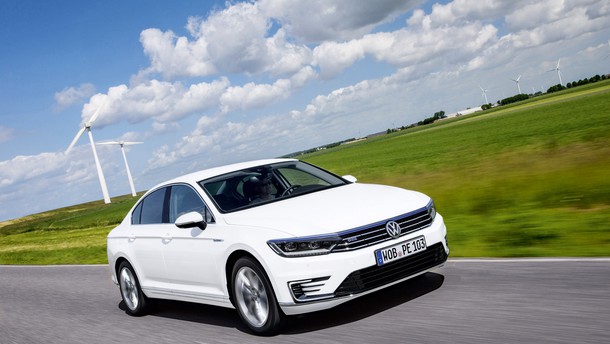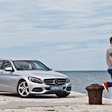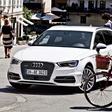
Every car upgrade seems to focus on a new look, new engines and extending the car's length. That's all very well, when most of the potential clientele might even think, "Why not, more is better than less!" True, but what happens when more is too much? When larger cars become a nuisance, especially to those who work their way through traffic jams on a daily basis, who struggle to fit their car into a garage or a tight parking space? So the fact that the new Passat doesn't exceed its predecessor in size is nothing but praiseworthy.

That is not to say that none of its forerunners, throughout its 41 years of history and over 22 million buyers, were smaller. Passat sales were remarkable even before the latest makeover edition-just in 2014 it sold to more than 1.1 million people. If that doesn't tell you much, then read this: A Passat sold every 29 seconds, which means two per minute, 126 per hour and over 3000 per day. Every single day of the year.
The last remake, however, may generate even more buyers, which also reflects Volkswagen's endeavors to bring more to the table than ever before. Though classified as a mid-class car, Passat is believed to have had a makeover substantial enough to now pass as a premium car. Moreover, a new range of powerful engines, with a hybrid rendition as one option, certainly adds to its value.

In contrast to the majority of car manufacturers with hybrid vehicles, Volkswagen chose a different tactic when embarking on this project. Their Passat hybrid is not the slowest in their fleet. Quite to the contrary, it is among the fastest of their vehicles. In keeping with their smaller Golf GTE, the hybrid system in the Passat GTE comprises a turbocharged 1.4-liter petrol engine with 166 horsepower (outshining Golf's 150 horsepower engine) and an electric motor with 85 kW or 115 horsepower (also beating Golf's 102 horsepower), which results in a maximum system output of 160 kW (218 HP). The 400 Nm of torque impresses even more, and given the fact it kicks in immediately, once you floor the pedal, it makes perfect sense that this is more than just your average fast hybrid.

With an energy capacity of 8.7 kWh, the Li-ion batteries can deliver a range up to 50 kilometers in all-electric mode. While you will come up short on a highway, the country roads, with frequent braking and downhills, will put you right up there with the official expected range. The batteries will take a good four hours for a full charge in a classical domestic outlet, and two and a half hours when charged via a charging station.

When driving, the feel is the same as in a regular Passat, or even better, due all that torque and power. It's also thanks to the transmission: unlike the majority of hybrids, which use continuously variable transmission (CVT), this version uses dual-clutch transmission. Gear shifts are smooth like butter, and the hybrid system is fully automatic. If you don't have enough of a charge to drive only on electricity, then the petrol motor will kick in. You can instruct the car to charge an empty battery, otherwise it will do so on its own, but much more slowly. Battery power can be saved for later, but if you need extra juice, you can press the GTE button and floor the gas pedal, summoning up all available electric and petrol-powered horsepower. At that point, it's awfully hard to talk about a slow hybrid, because the Passat GTE can jet from zero to 100 km/h in just 7.4 seconds. Slow? No way. Green? Absolutely. Just take a look at the fuel consumption below, in the technical specs section.



